How to Make Slow Cooker Chicken and Sweet Potato Curry Without Coconut Milk
Coconut milk is a staple in many curry recipes, known for adding richness, body, and a subtly sweet depth. But not everyone wants to use it — some avoid it due to allergies, others for nutritional reasons, and some simply prefer a lighter, cleaner finish.
This recipe offers a satisfying alternative: a slow-cooked curry made with chicken thighs, sweet potatoes, and classic spices — without a single drop of coconut milk. The result is a warming, gently spiced dish that feels nourishing, naturally thickened, and easy to digest.
It’s ideal for weeknights or meal prep, with minimal effort and maximum payoff — no searing, no pre-cooking, just straightforward layering and slow, aromatic transformation.
Why Make Curry Without Coconut Milk?
Coconut milk is delicious — but it’s not always the best option. Whether for health, preference, or practicality, many home cooks seek alternatives. Here’s why this recipe skips it:
- Allergy-friendly: Coconut is classified as a tree nut by some authorities, and can trigger reactions in sensitive individuals.
- Lower in saturated fat: Sweet potatoes and broth provide body without relying on fat-based richness.
- Flavor control: Without coconut’s creamy sweetness, spices like cumin, turmeric, and ginger shine more clearly.
- Pantry simplicity: No need to buy specialty cans — just vegetables, protein, spices, and stock.
And perhaps most importantly — you won’t miss it. The curry is still silky, balanced, and hearty thanks to the way the ingredients naturally break down and enrich the sauce.
Ingredient Overview
Instead of overwhelming you with dozens of components, this curry keeps it simple. Every ingredient earns its place, serving either a flavor, texture, or nutritional role.
- Chicken thighs: Boneless, skinless thighs are the ideal cut here. They stay juicy and flavorful even after hours of cooking. Chicken breast tends to dry out in slow cookers — avoid unless you reduce cooking time significantly.
- Sweet potatoes: The core thickener and natural sweetener of this dish. As they break down, they create a creamy, velvety sauce — no dairy, flour, or coconut needed.
- Onion, garlic, and ginger: These aromatics create a rich base. Unlike stovetop curries, where they’re usually sautéed first, here they slowly release their flavor directly into the broth.
- Warm spices: A blend of curry powder, turmeric, cumin, paprika, salt, and pepper adds both color and complexity. Choose a mild curry powder for a family-friendly dish, or a hotter one if desired.
- Stock: Chicken stock gives the sauce body and savory depth. Opt for a low-sodium variety so you can control the salt.
- Thickener (optional): A small amount of cornstarch or arrowroot slurry added near the end of cooking helps create a glossy, spoon-coating finish — especially useful if your sweet potatoes are very firm.
Comparison Table: Coconut Milk Alternatives in Curry
| Substitute | Texture in Sauce | Flavor Profile | Allergy-Friendly | Fat Content | Used in This Recipe |
|---|---|---|---|---|---|
| Sweet Potato (mashed) | Naturally thickened | Mild, earthy sweetness | Yes | Low | Yes |
| Cashew cream | Very rich | Nutty, heavy | No | High | No |
| Greek yogurt | Tangy, creamy | Bright acidity | No | Moderate | (optional only) |
| Oat or almond milk | Thin, slightly creamy | Neutral | Yes | Very low | (too thin) |
| Vegetable purée (e.g. carrot) | Smooth if blended | Slightly sweet, vegetal | Yes | Low | Optional |
Among all the options, sweet potatoes offer the best balance: they naturally thicken, contribute to the flavor, and avoid allergens — all while being readily available and affordable.
Step-by-Step Instructions (with Purpose Behind Each Step)
Slow cooker recipes are often described as “dump and go,” but even with a passive cooking method like this, the order of operations and ingredient placement play a crucial role in the final taste and consistency.
Let’s walk through this recipe the way a thoughtful cook would — not just throwing things into the pot, but building flavor layer by layer.
1. Aromatic Base — Onion, Garlic, Ginger
Start by placing sliced onion, minced garlic, and grated ginger at the very bottom of the slow cooker.
Why? In the absence of direct heat from a skillet, the bottom of the crockpot acts as the flavor release zone. The vegetables here will cook in the warmest part of the pot, gradually softening and releasing their fragrance into the liquid.
Pro tip: Use a large onion and make sure the garlic and ginger are fresh — not powders. The longer cook time rewards real ingredients.
2. Add the Chicken — Raw, but Not Random
Lay the boneless, skinless chicken thighs directly on top of the aromatics. You can either cut them into chunks (roughly 2–3 cm) or leave them whole if you prefer to shred them at the end for a rustic texture.
The meat resting directly on top of the aromatics ensures:
- It will absorb flavor from underneath.
- It won’t dry out, since the sweet potatoes and liquids above it act as insulation.
Why thighs? Because they don’t dry out — even after 6+ hours of cooking. Breasts don’t hold up the same way unless you reduce the cook time significantly.
3. Sweet Potatoes — The Curry’s Secret Weapon
Spread the diced sweet potatoes evenly over the chicken. Use chunks that are uniform in size (about 1.5–2 cm) to ensure even cooking.
As the curry simmers, these potatoes will do three things:
- Soften and absorb spice-infused liquid.
- Break down slightly, thickening the sauce.
- Provide a mild sweetness that balances the spice and acidity later.
They’re more than a filler — they’re what gives this coconut-free curry body and structure.
4. Spices — Sprinkle, Don’t Stir (Yet)
Now it’s time for the spice blend: mild curry powder, ground turmeric, cumin, paprika (if using), salt and pepper.
Sprinkle the spices directly over the top, rather than mixing them in at this stage. This lets them bloom gradually into the liquid during cooking without getting diluted immediately.
Why not stir? Because that would push spices down too early and prevent them from infusing properly into the liquid and fat layers. Let gravity and time do the job slowly — that’s the philosophy behind slow cooking.
5. Pour in the Stock — But Don’t Drown It
Add the chicken stock gently. You want just enough to come almost level with the top layer of sweet potatoes, but not completely submerge them.
Usually, 3½ to 4 cups of low-sodium chicken broth is sufficient. This gives the curry:
- Enough liquid to cook evenly
- Enough exposure on the top layer for some ingredients to steam instead of stew
- Room for the sweet potatoes to contribute their starch and thicken it naturally
6. Set and Cook — But Choose Wisely
Cover the slow cooker with its lid and select your cooking time:
- Low heat for 6–7 hours is the ideal setting for fully developed flavor and melt-in-your-mouth texture.
- High heat for 3–4 hours works too, though the potatoes may hold their shape more and the chicken may be slightly firmer.
Avoid lifting the lid during cooking. Every peek releases steam and heat, which can significantly delay the cooking process and destabilize the flavor balance.
Finishing Touches – Thickening, Acidity, and Final Adjustments
By the end of the slow cooking process, your kitchen will smell incredible, and your curry will look rich and golden. The chicken will be tender enough to fall apart with a spoon, and the sweet potatoes will be soft throughout. But we’re not done yet.
At this point, the curry will still seem a bit too brothy — especially since we didn’t use coconut milk, cream, or dairy to add body. Here’s how we finish it with precision.
1. Thicken the Curry (Optional but Recommended)
If you like a looser, soup-style curry, you can skip this step. But for a more classic, spoon-coating texture, you’ll want to add a slurry.
How to do it:
- In a small bowl, mix 2 tablespoons of cornstarch (or arrowroot powder) with 2 tablespoons of cold water.
- Stir until smooth — no lumps.
- Pour the slurry into the curry, stir gently, and switch the slow cooker to High for the final 20–30 minutes.
The heat activates the thickener, and the starch combines with the natural potato breakdown to create a smooth, glossy sauce. You’ll notice the curry start to cling gently to the chicken and vegetables.
Note: If you prefer not to use any added thickener, simply mash a few of the sweet potato chunks with a fork and stir them into the sauce. This technique works especially well if your potatoes are very soft.
2. Add Fresh Acidity
Curries need balance — and while the spices and sweet potato provide depth and warmth, you also need a touch of acidity to round things out and brighten the final flavor.
- Squeeze the juice of half a lemon or lime directly into the curry once cooking is complete.
- Stir gently and taste again. You should notice a brighter, more complete flavor.
This step is subtle but essential — it transforms the dish from “good” to “excellent.” Acid enhances spices, lifts sweetness, and wakes up the palate after a long, slow cook.
3. Taste and Adjust
Before serving, take a moment to taste and fine-tune:
- If it tastes flat → add a pinch of salt or a splash of lemon juice
- If it’s too spicy → serve with a dollop of plain yogurt
- If it’s too thick → loosen with a bit of warm stock
- If it’s too sweet → balance with more black pepper or a small pinch of garam masala
Final seasoning is the difference between a recipe that just works and a dish that makes people ask for seconds.
Serving Suggestions – Plating, Pairings, and Presentation
Although this slow cooker curry is rustic and unfussy by nature, the way you serve and accompany it can elevate it from a weekday meal to a centerpiece-worthy dish.
What to Serve With Chicken & Sweet Potato Curry
Depending on dietary needs, you have a wide range of sides to choose from. This curry’s richness and natural sweetness pair well with both starchy and low-carb options.
✔ For traditional eaters:
- Steamed basmati rice: Its long grains and light texture are ideal for soaking up the thickened sauce.
- Brown rice or wild rice: Earthier flavor and added fiber — great for a heartier meal.
- Flatbreads: Naan or chapati are perfect for scooping and dipping, especially if you skip rice entirely.
✔ For low-carb or gluten-free diets:
- Cauliflower rice: Keeps the plate light while still providing a neutral base.
- Grilled vegetables: Zucchini, eggplant, or bell peppers add savory depth and make the meal more colorful.
- Steamed greens: Spinach, kale, or Swiss chard offer freshness and iron, balancing the softness of the curry.
Portion tip: 1½ ladles of curry over ½ cup of rice or vegetables is the ideal ratio for both texture and visual appeal.
Optional Garnishes That Add a Finishing Touch
Even a simple garnish can add color, contrast, and aromatic interest. Here are subtle additions that won’t overpower the dish:
- Fresh cilantro or parsley, roughly chopped — for brightness
- Toasted seeds (like pumpkin or sesame) — for texture and nuttiness
- Dollop of plain yogurt or dairy-free alternative — for cooling contrast
- Lime wedges on the side — for customizable acidity
If serving for guests, consider presenting the curry in a deep bowl with a rim, a small swirl of yogurt in the center, and fresh herbs placed just off-center. Minimal effort, maximum effect.
Storage & Reheating Guidelines
This curry stores exceptionally well, making it perfect for meal prep or next-day lunches.
Refrigeration
- Store in an airtight container for up to 4 days
- Reheat gently on the stovetop or in the microwave at medium power to preserve texture
Freezing
- Freeze in individual portions for up to 2 months
- Thaw overnight in the fridge before reheating
- Stir after reheating to restore smoothness (some separation is normal)
Important: If using dairy-based garnishes (like yogurt), add those only after reheating, not before freezing.
Frequently Asked Questions (FAQ)
Can I use chicken breast instead of thighs?
Yes, but with caution. Chicken breast tends to dry out during long slow cooking. If using breast meat, cut it into larger chunks and reduce the cooking time by 1–1.5 hours. Monitor closely for doneness.
What can I use instead of sweet potato?
You can substitute with butternut squash, carrots, or even white potatoes (though they won’t add the same natural sweetness or creaminess). Just be aware the flavor profile will change.
Is this curry spicy?
No, the base recipe is mild. However, you can adjust the spice level by:
Including fresh green chili when layering ingredients
Using a spicier curry powder
Adding cayenne pepper or chili flakes
Can I make this recipe vegan or vegetarian?
Absolutely. Replace the chicken with:
Cauliflower florets (added in the last 2 hours of cooking)
Use vegetable stock instead of chicken stock.
Canned chickpeas (drained and rinsed)
Diced tofu (pressed firm tofu holds up well)
Do I need to sauté anything before slow cooking?
Not for this recipe. While sautéing spices and aromatics can intensify flavor, this curry is designed to be fully slow-cooked from raw. The long cooking time builds flavor gradually, without extra steps.
Can I cook this on the stovetop or in the oven instead of a slow cooker?
Yes. Use a Dutch oven or heavy-bottomed pot:
Stir occasionally and add water if it reduces too much
Sauté aromatics first
Simmer on low heat for 1.5 to 2 hours with a lid
Why add lemon or lime at the end?
Acidity added at the end of cooking balances the sweetness of the sweet potatoes and enhances the spices. Don’t skip this — it sharpens and completes the dish.
Can I freeze leftovers?
Yes. This curry freezes well for up to 2 months. Cool completely, portion into airtight containers, and freeze. Thaw in the fridge and reheat gently. Stir after reheating to restore smooth consistency.
My curry is too thin — what do I do?
Use one of the following:
Add a cornstarch slurry (2 tbsp cornstarch + 2 tbsp cold water) and cook on high for 20–30 minutes
Avoid adding flour or cream — they’ll dull the flavor.
Mash some of the sweet potato chunks directly into the curry
What’s the best way to serve this curry for guests?
Serve in wide shallow bowls over basmati rice or with warm naan. Garnish with:
- Chopped cilantro or parsley
- A swirl of unsweetened yogurt or coconut-free vegan cream
- Toasted seeds or crushed cashews (if no allergy concerns)
Add lime wedges on the side so guests can brighten it to taste.


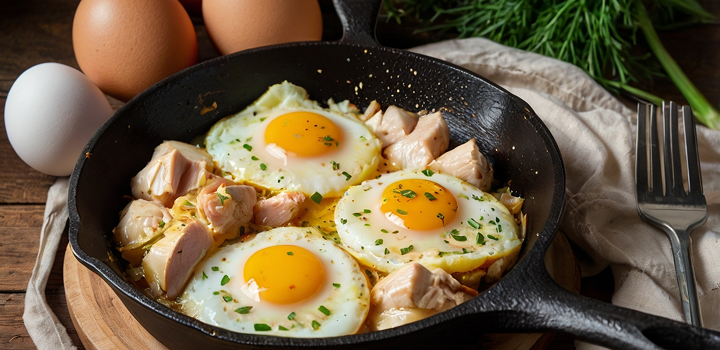
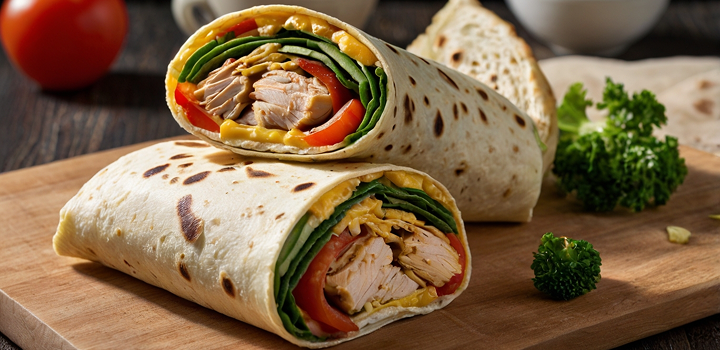


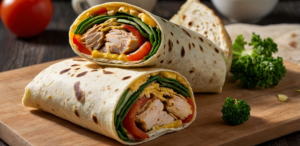
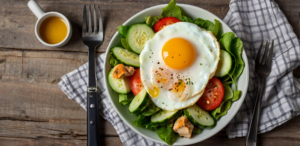
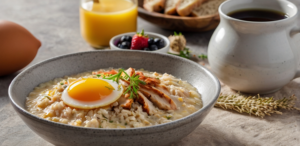



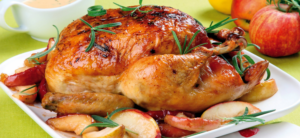
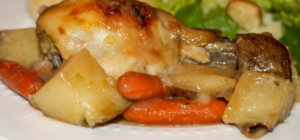
Post Comment